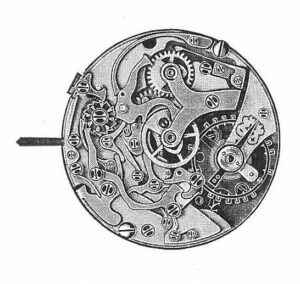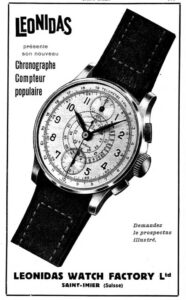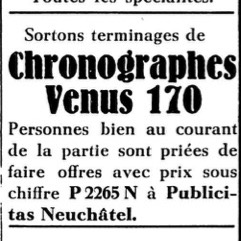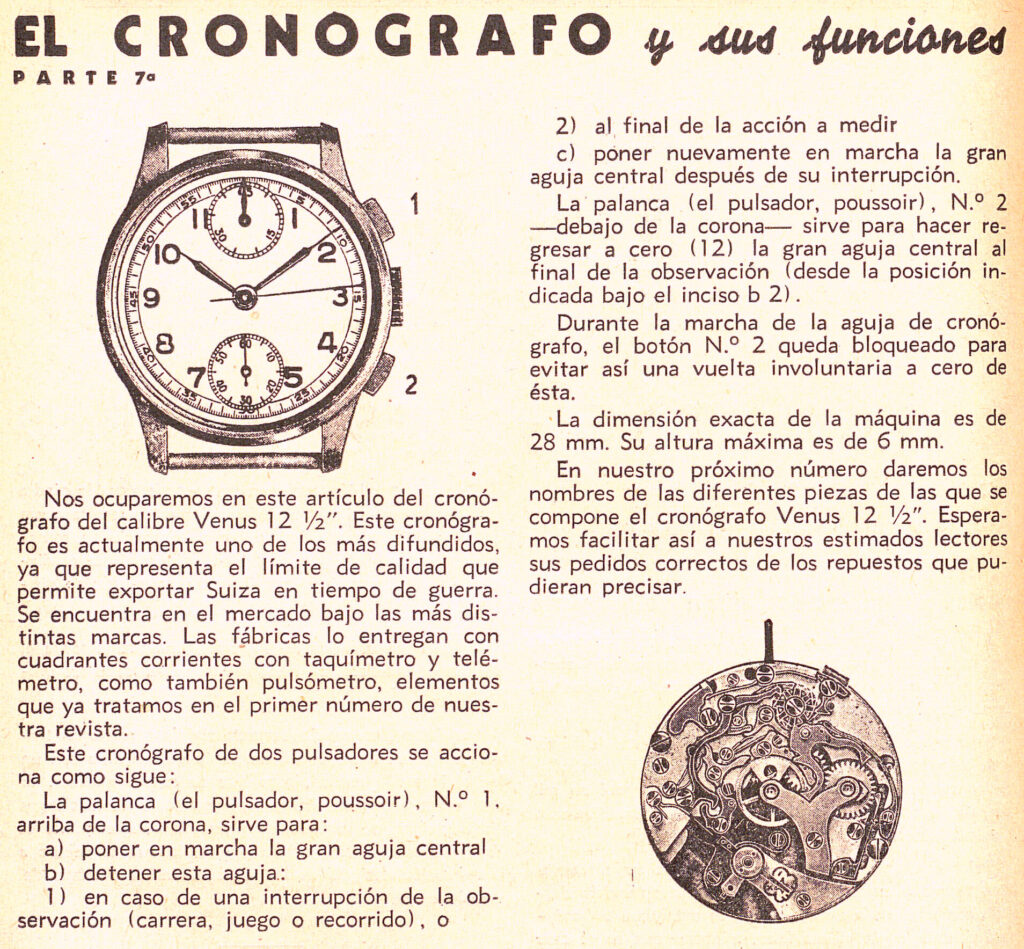 |
Brand: | Vénus | 





|
|---|---|---|---|
| Family: |
Unknown
|
||
| Height: | 6.00 mm | ||
| Jewels: | 17 | ||
| Reserve: | 40 hours | ||
| Frequency: | 18,000 A/h | ||
| Winding: | Hand winding | ||
| Diameter: | 28.00 mm (12.5 ligne) | ||
| Complications: | 2-Button, 8-Column Chronograph, Chronograph, Column Wheel Chronograph, Oscillating Pinion Chronograph | ||
| Hands: | 30 Minute Chronograph Hand at 12:00, 45 Minute Chronograph Hand at 12:00, Central 60 Second Chronograph Hand, Central Hour Hand, Central Minute Hand, Small Seconds Hand at 6:00 | ||
| Distinguishing Technical Characteristics | |||||||||||
|---|---|---|---|---|---|---|---|---|---|---|---|
 Hand-Winding  Clockwise Balance Cock  8-Column Chronograph |
|||||||||||
| Production: 1936 – 1951 | |||||||||||
| 1910s | 1920s | 1930s | 1940s | 1950s | 1960s | 1970s | 1980s | 1990s | 2000s | 2010s | 2020s |

Venus Cal. 170 is a hand-winding column wheel chronograph movement with distinctive 6-12 subdial arrangement. The 12:00 register includes a 30 or 45 minute chronograph counter. It is the only Vénus movement with eight columns rather than seven, and the only column wheel Vénus movement to use an oscillating pinion rather than a traditional horizontal clutch.

Cal. 170 is first documented in 1936 and was in production by the following year. It remained in production until 1951, by which time it was replaced by the Cal. 188 family of cam-switching chronograph movements.
Cal. 170 was a revolutionary movement, given its small diameter and modern dual-pusher design, and set the stage for the Cal. 150 and Cal. 175 families, though it was completely different in design. It was much less expensive than competing movements from Valjoux, and was nearly as cheap as Landeron’s Cal. 47, the first full-feature cam-switching chronograph. All of these aspects made it quite successful throughout the 1940s, though the unusual 6-12 layout was not as popular in later decades.
Vénus utilized the Heuer-style oscillating pinion design to engage and disengage the chronograph timer in Cal. 170. The movement was also unusual in locating the winding click on the dial side and using a rocker bar to select the crown function. Although often noted as measuring 28.2 mm in diameter, the official Venus technical documentation lists it at 28.00 mm by 6.00 mm.
Cal. 170 was notably used by Heuer (Ref. 3249) and Breitling in their cheaper “popular” lines. But was also used by many other brands, including Büren, Elbon, Eloga, Gallet, Helbros, Leonidas, Olma, Silvana, Telda, Wittnauer, and Wyler/Siduna.

More detail on the history of Vénus is available in the Grail Watch article, “The Rise of Vénus, Legendary Chronograph Maker“
Images are taken from official publications and are used here for commentary and educational purposes. Copyright is held by the original owner as noted.